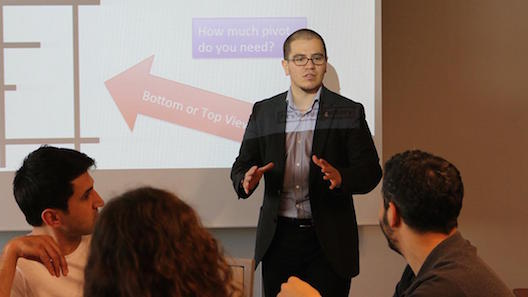Users first: why quality design is crucial


Scores turned out for UXAlive, Istanbul's conference on user
experience and design. (Images via Facebook)
The impact of design-driven companies and the acquisitions of design firms over the last few years are just two indicators of the importance of design and user experience. The recent event UXAlive, held earlier this month in Istanbul, Turkey may be an indicator that design values are changing in the region as well.
Organized by Userspots around the theme “experience everywhere,” UXAlive brought together 25 local and international professionals for two days and kicked off discussions about design and user experience.
Some speakers, like cxpartners managing director Giles Colborne, user experience designer Elaine Brechin Montgomery, design experts Dustin Senos, Gökhan Besen and Job Jansweijer and UX experts Christian Holst and Toby Sterrett, shared their perspectives and approaches to design.
Others, like former visual UX designer Jeff Romi and head of digital at twofour54 Mehmet Dogan, focused on more specific topics. In a presentation about “humor-driven design,” Jeff Romi noted that “humor is an emotional catalyst for better interactions.” Mehmet Dogan talked about the role of “friction” in tailoring more engaging and desirable experiences.
The conference also included a number of non-designer speakers like Yalcin Pembecioglu (cofounder and executive director of digital marketing resource Bigumigu), who talked about marketing and communication principles with examples from advertisements. Jambu Palaniappan (Uber regional manager for Eastern Europe, Middle East & Africa) said that “Uber seamlessly overlaps offline everyday life with the ease and creativity of mobile.”

UXAlive was an opportunity to discuss design and user
experience.
Some others professed their own visions about design, like Humberto Matas of Designit, who discussed the field of service design.
“Ultimately, the experience is your product,” Matas said to the businessmen and women gathered. “Basically, what we try to do is to have a holistic approach to the client needs,” he told Wamda later. “ Instead of understanding a client in small and different chunks served from different parts of the company, we try to do the holistic perspective and build a narrative that is coherent and delivers the experience that the service designers want to deliver.”
Indeed, without a holistic approach that oversees the customer experience entirely, it is up to each department to adjust their individual touch points and try to elevate the entire experience of the journey. The problem is that no single department can address the entire customer journey, and even when individual departments focus on delivering the best experience they can, there’s no way to tell what happens before or after their individual touch point along the way.
Such an application of service design almost seems like the next competitive edge for startups and corporates - one that is more challenging to implement than UX. This is because it requires businesses to break down silos and create a new coordination across departments that’ll deliver the best possible experience. Unlike established corporations, this might be a huge opportunity for startups who are building their organizations from scratch.


